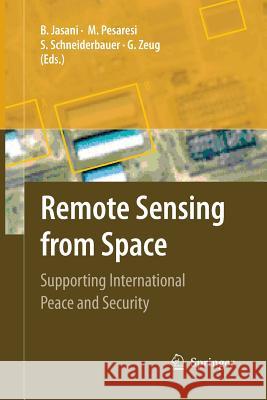Remote Sensing from Space: Supporting International Peace and Security » książka
Remote Sensing from Space: Supporting International Peace and Security
ISBN-13: 9789400789456 / Angielski / Miękka / 2014 / 297 str.
Remote Sensing from Space: Supporting International Peace and Security
ISBN-13: 9789400789456 / Angielski / Miękka / 2014 / 297 str.
(netto: 576,41 VAT: 5%)
Najniższa cena z 30 dni: 578,30
ok. 22 dni roboczych
Bez gwarancji dostawy przed świętami
Darmowa dostawa!
David Stevens Space-based information, which includes earth observation data, is increasingly becoming an integral part of our lives. We have been relying for decades on data obtained from meteorological satellites for updates on the weather and to monitor weather-related natural disasters such as hurricanes. We now count on our personal satellite-based navigation systems to guide us to the nearest Starbucks Coffee and use web-based applications such as Google Earth and Microsoft Virtual Earth to study the area of places we will or would like to visit. At the same time, satellite-based technologies have experienced impressive growth in recent years with an increase in the number of available sensors, an increase in spatial, temporal and spectral resolutions, an increase in the availability of radar satellites such as Terrasar-X and ALOS, and the launching of specific constellations such as the Disaster Monitoring Constellation (DMC), COSMO- SkyMed (COnstellation of small Satellites for the Mediterranean basin Observation) and RapidEye. Even more recent are the initiatives being set-up to ensure that space-based information is being accessed and used by decision makers, such as Sentinel Asia for the Asia and Pacific region and SERVIR for the Latin America and Caribbean region.











